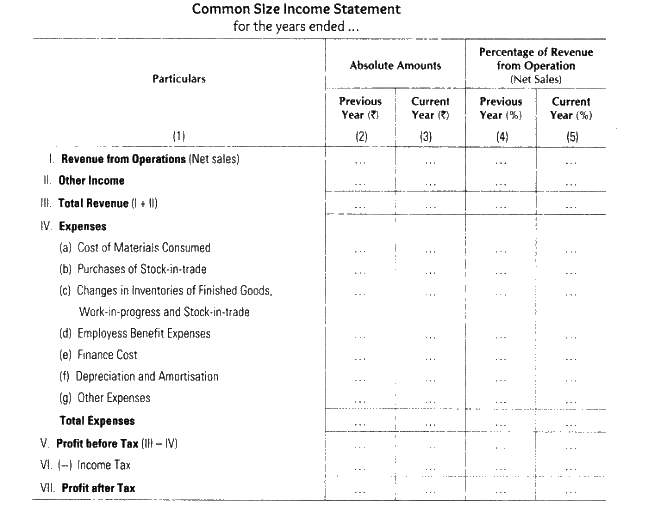Financial statements are prepared for organisations or businesses to know about the state of the business at that time or period. For an organisation or a business owner, the importance of financial statements is defined by its interpretation and analysis.
Importance of financial statements is different for different individuals in an organisation. For a manager, it would be the efficiency of the operations, and for a stockholder, it will be related to the earnings and profits of the company.
What is Common Size Statement?
Common size statement is a form of analysis and interpretation of the financial statement. It is also known as vertical analysis. This method analyses financial statements by taking into consideration each of the line items as a percentage of the base amount for that particular accounting period.
Common size statements are not any kind of financial ratios but are a rather easy way to express financial statements, which makes it easier to analyse those statements.
Common size statements are always expressed in the form of percentages. Therefore, such statements are also called 100 per cent statements or component percentage statements as all the individual items are taken as a percentage of 100.
Types of Common Size Statements
There are two types of common size statements:
- Common size income statement
- Common size balance sheet
1. Common Size Income Statement
This is one type of common size statement where the sales is taken as the base for all calculations. Therefore, the calculation of each line item will take into account the sales as a base, and each item will be expressed as a percentage of the sales.
Use of Common Size Income Statement
It helps the business owner in understanding the following points
- Whether profits are showing an increase or decrease in relation to the sales obtained.
- Percentage change in cost of goods that were sold during the accounting period.
- Variation that might have occurred in expense.
- If the increase in retained earnings is in proportion to the increase in profit of the business.
- Helps to compare income statements of two or more periods.
- Recognises the changes happening in the financial statements of the organisation, which will help investors in making decisions about investing in the business.
2. Common Size Balance Sheet:
A common size balance sheet is a statement in which balance sheet items are being calculated as the ratio of each asset in relation to the total assets. For the liabilities, each liability is being calculated as a ratio of the total liabilities.
Common size balance sheets can be used for comparing companies that differ in size. The comparison of such figures for the different periods is not found to be that useful because the total figures seem to be affected by a number of factors.
Standard values for various assets cannot be established by this method as the trends of the figures cannot be studied and may not give proper results.
Common Size Income Statement Format
The common size income statement format is as follows:

Preparing Common Size Balance Sheet
(1) Take the total of assets or liabilities as 100.
(2) Each individual asset is expressed as a percentage of the total assets, i.e., 100 and different liabilities are also calculated as per total liabilities. For example, suppose total assets are around Rs. 4 lakhs, and inventory value is Rs. 1 lakh. In that case, it will be counted as 25% of the total assets.
Limitations of Common Size Statement
Following are the limitations discussed
- It is not helpful in the decision-making process as it does not have any approved benchmark.
- For a business that is impacted by fluctuations due to seasonality, it can be misleading.
This concludes the topic of the Common Size Statement, which will be helpful for the students in getting a better understanding of the concept. For more such interesting concepts, stay tuned to BYJU’S.
Comments